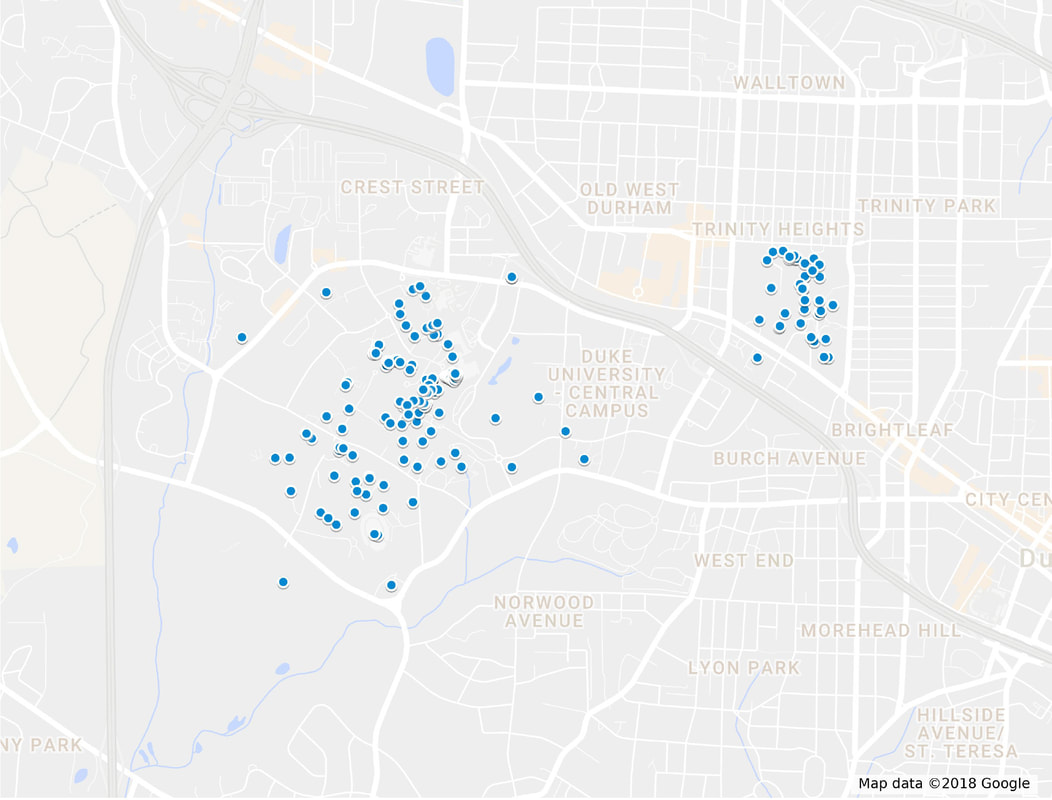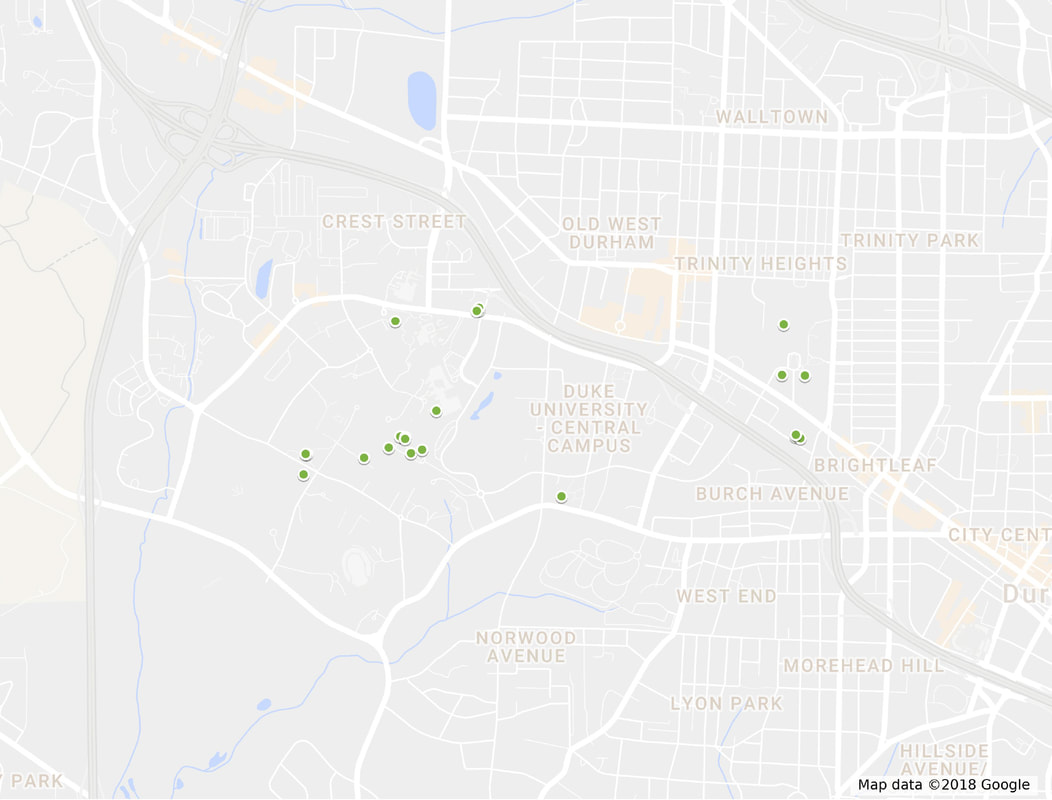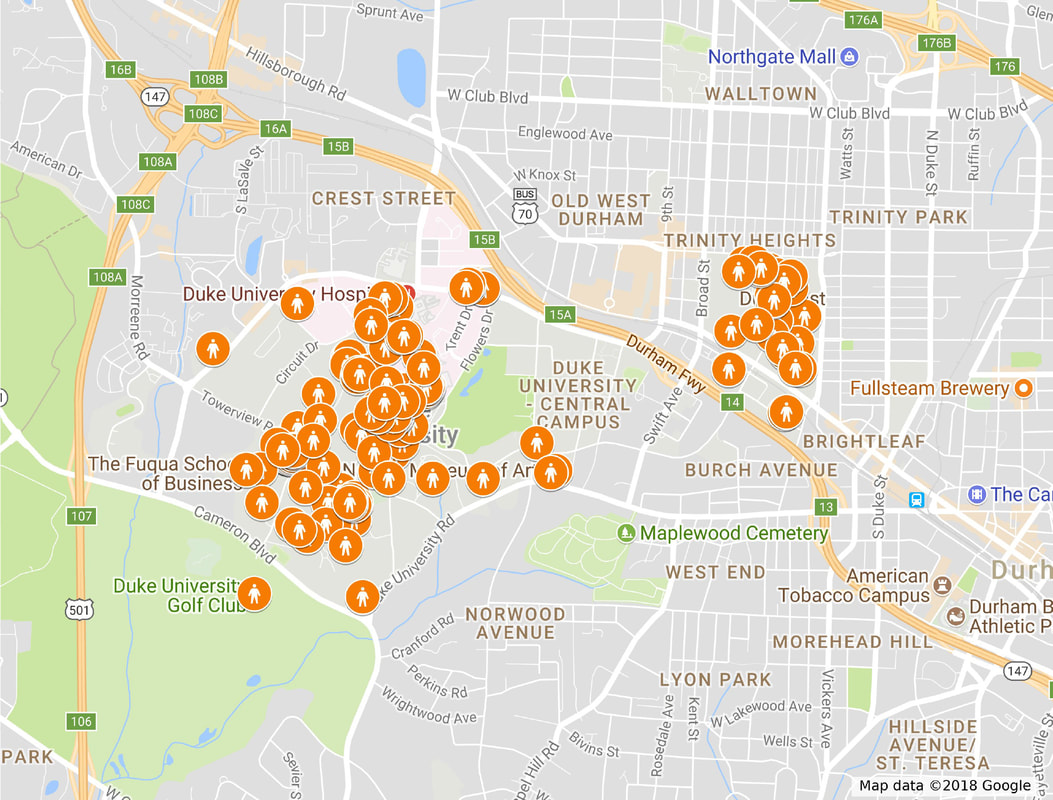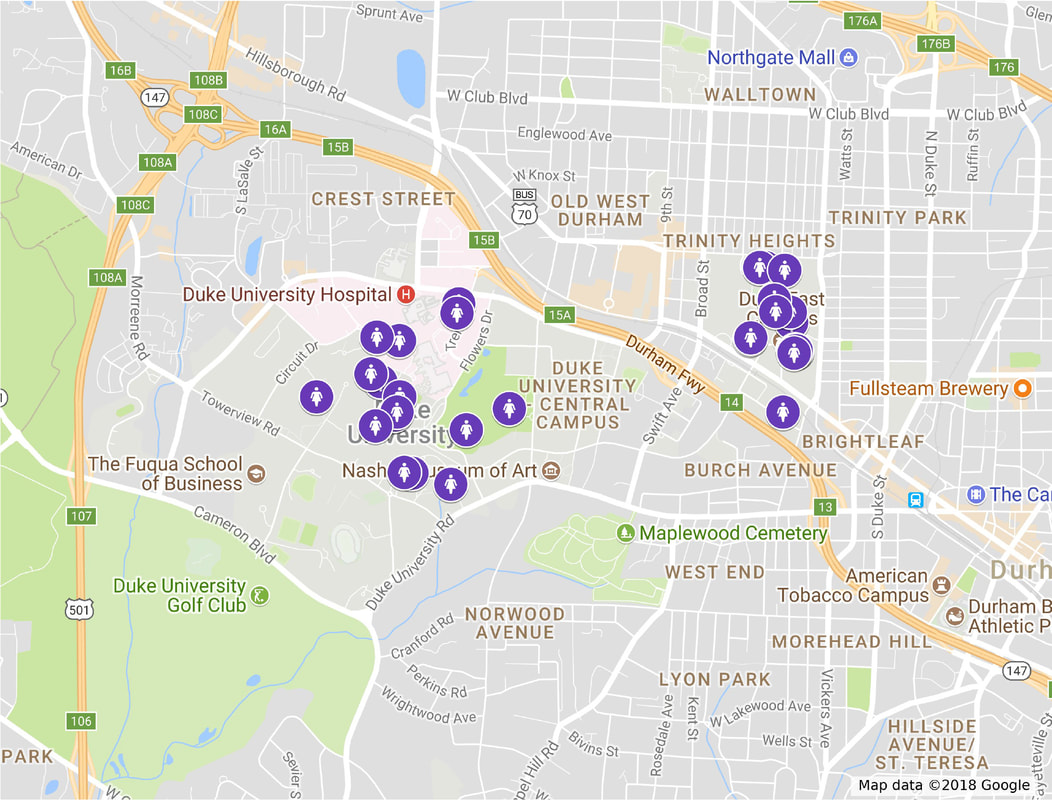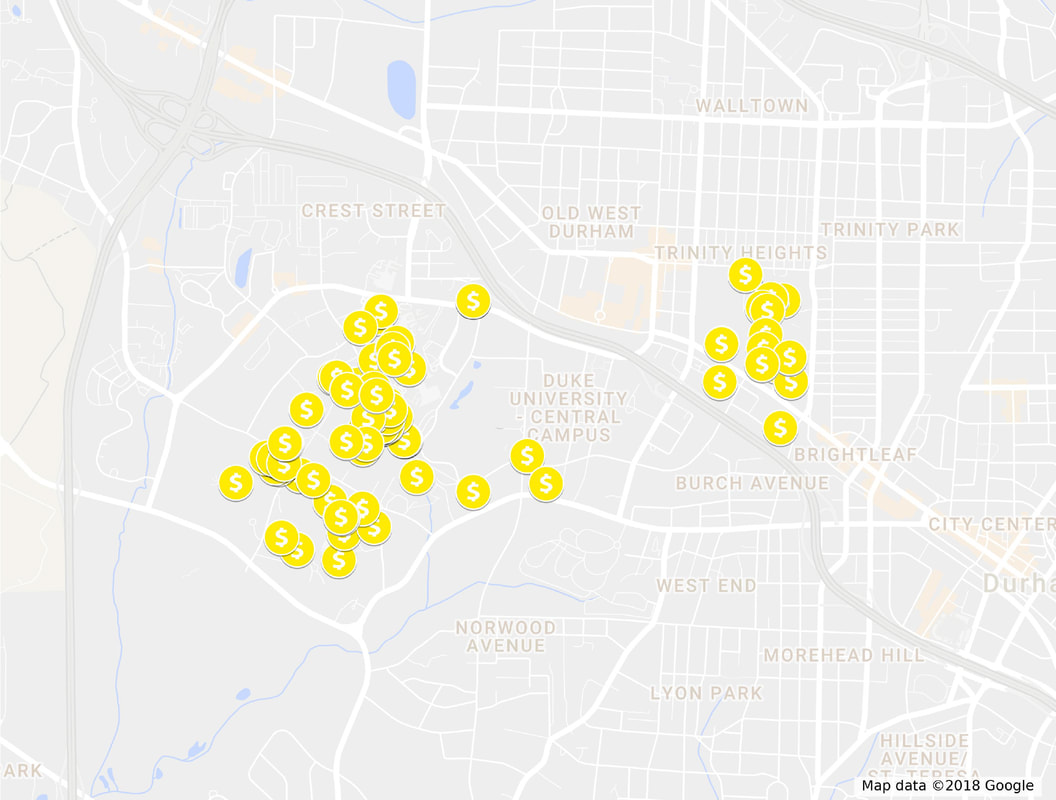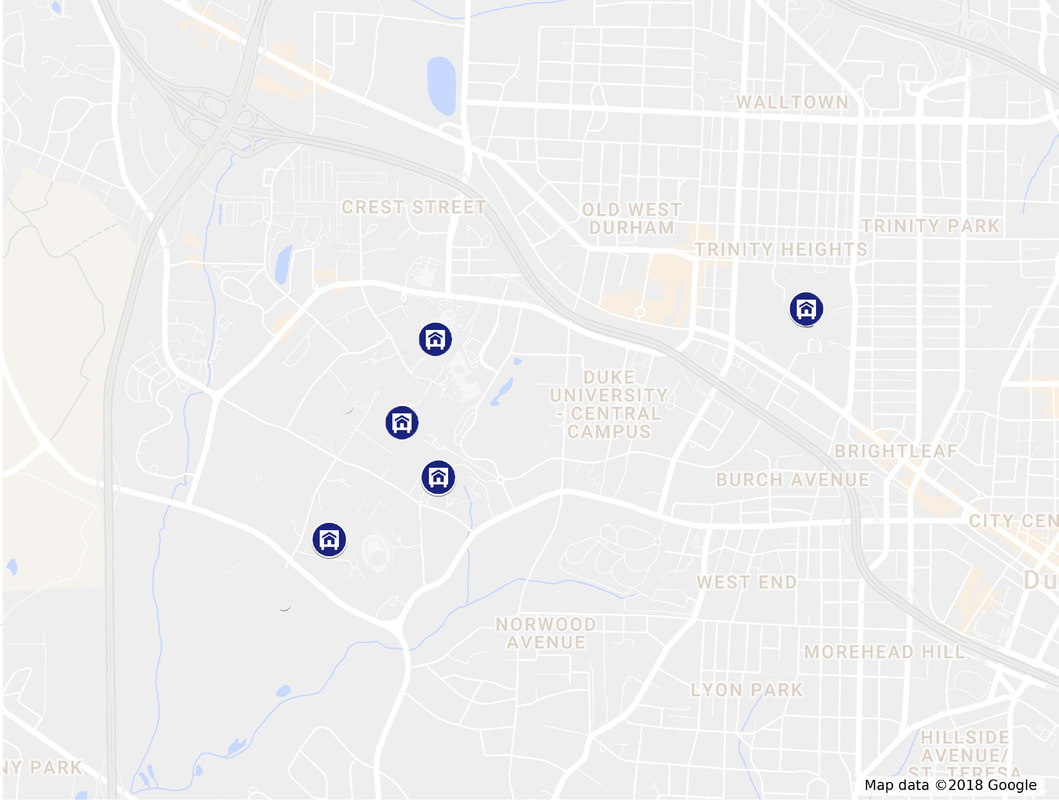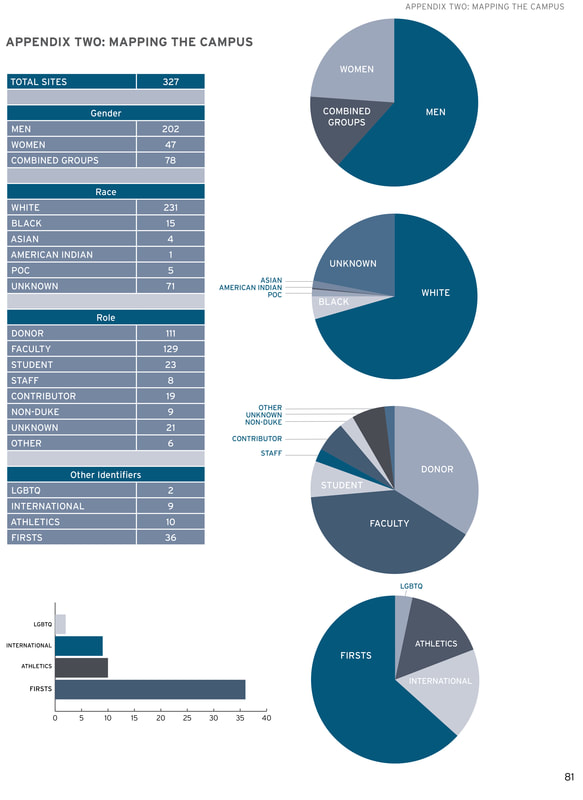site-mapping coding key
In total, we found 327 sites. We recognize that these are most, but not all, of the memorials that currently exist on campus. We scoured East, West, Central, and Medical Campus -- to record sites and their locations, later doing research on the people and events commemorated. Although we did not cover every memorial in every area on campus, we did capture the most visible and prominent sites, located in areas that see large amounts of daily traffic.
- Site types were categorized into: area (atriums, quads, centers); art (made to honor a person, not made by the person or of the person); building (incl. towers and stadiums); bust (head and shoulders statues); exhibit (collection of multiple documents); parts of an exhibit; plaque; portrait; room; and statue (incl. benches and lamp posts).
- Site genders were categorized into: man and woman. Sites honoring groups of both genders (i.e. couples, families, donor societies) were omitted from labeling. 10 were marked unknown.
- Site roles were categorized into: contributor (the Dukes, architects); donor; faculty; non-Duke; staff; and student. Sites honoring people of multiple roles were labeled by the role of greatest prominence, which most likely warranted said site. Wives of donors were omitted from labeling. 15 were marked unknown.
- Site races were categorized into: American Indian, Asian/Asian American, Black, POC (for non-White racially ambiguous), and White. Sites honoring groups of heterogenous racial makeup were omitted from labeling. 37 were marked unknown. There are 0 known sites for people of Latinx race.
- Please note that the University has multiple sites for a single person, which may inflate the statistics. For example, John Hope Franklin and Julian Abele (both Black men) are honored through multiple sites.
- Please also note that the donor statistic is underreported, as our team did not have time to record every donor plaque in the Sarah P. Duke Gardens, and those in other various rooms around campus.
Data cleaned and organized by Tim Stallman and Helen Yu
